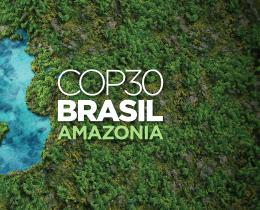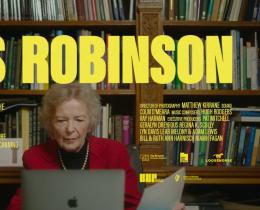Omega: You have been instrumental in The Oberlin Project, which envisions a form of "full-spectrum sustainability" in the city of Oberlin, Ohio, where you are distinguished professor of environmental studies and politics at Oberlin College. The project has had some very significant success in creating one of the first climate-positive cities in America's heartland. Can you speak to the small-scale successes, as well as large-scale successes, of this project and how they may be applied to larger communities or even regions?
David: First of all, the project is an attempt to take everything that we've learned about connectedness and put it together in a single system. And we've used the phrase “full-spectrum sustainability,” which is just a fancy way to say that we're a community and we’re trying to solve, not just single problems, but problems that are interrelated. And so we focus on food growing, reviving local food economy, becoming a carbon-neutral community, rebuilding a local economy that actually works, and do all this as an educational venture. Then there are the subsidiary goals below that—changing policy and changing incentive structure and thus making sustainability the default setting, the easy thing to do, not the hard thing with, you know, rooms plastered with blood and gore and heroic activity and so forth. Sustainability ought to be the easy thing to do.
So one of the things we want to show is that this is actually a pretty good economic deal, not just something that you do because it's the right thing to do. It's actually the smart thing and the right thing both to do. This year, the electric supply in the community will be 90% carbon free. We deployed a three-megawatt output solar array, and we've done a $17 million building complex right in the middle of the downtown. We spent roughly $23 million or $24 million to revive two old buildings that needed to be redone, both at the LEED Gold level, so there have been a lot of successes along the way. The next big thing for us is doing the first solar-powered, possibly zero-discharge, LEED Platinum-rated hotel in the country. And then the final goal for us is to figure out how you take this little experience in a small town of 10,000 and expand it to a much larger region. How do you take the idea of full-spectrum sustainability, and make it viral?
Omega: Back in 1996, you helped organize the construction of one of the greenest buildings in North America, the Adam Joseph Lewis Center for Environmental Studies on the Oberlin College campus. When you look back at this project and its sizable achievement at the time, how do you see the progression of green building over the last decade or two? And where have we come on an ideological measure?
David: Well, the Lewis Center was completed in the year 2000, and it was a Platinum building before there was a rating system by which we could judge it. It's a zero-discharge building; it has a living machine like the one here at Omega. It's entirely solar powered. We generate about half as much as energy as we need, so we're 150% over need. It's weathered extremely well, and as an educational facility, it's just over-performed. I mean, it's been a success in every measure.
Green building since that time has become the “in” thing to do, so if you're building anything, you aim for either USGBC [U.S. Green Building Council] rating or the Living Building Challenge. And it's possible to be both. And anybody on a college campus that doesn't do this is simply not paying attention. The old argument was, "Good thing to do if we can afford to do it." The answer now is, after a decade of experience, “You can't afford not to.” And the deeper the green, the better the performance and better the economics. And the payback times on green buildings is incredibly short, especially if you include increased productivity and morale, which is the most expensive parts of any building. The shell and the entire infrastructure in a building is the cheap part, but if you increase productivity, the payoff is a building people want to be in. To be sure, we're not going to build our way out of the mess that we're currently in. But if you have to build, you have to build green. I think the next step is that you begin to widen the focus. Instead of a single building, begin to see green building as a larger design template for the larger, wider community. So instead of designing standalone buildings, you begin to design clusters, and then clusters of clusters, and, pretty soon, you're talking about little cities and then regions, and so forth.
Omega: And infrastructure, I would imagine?
David: And infrastructure. You're trying to ask, “Okay, how much infrastructure can you eliminate—pipes, wires, and roads, and so forth?” The answer is you can eliminate a great deal of it. And I think that some of the talks have been terrific on this point. We just came back from Spain, two weeks in Spain, and Spain may be a stressed economy, but, by God, their trains are clean and neat and they run on time. You leave from a great station, and you arrive at a great station, and you have great infrastructure when you arrive there. It seems so unAmerican, you know? [laughter]
Omega: It's sadly funny because a reoccurring theme in a lot of the conversations at this conference has been that the United States exists in Europe's shadow, in respect to implementing real environmental policy and innovation.
David: I think it's true. The iron laws of sustainability are also your iron laws of nature. They are just some operating rules that you can't violate. You can't defy laws of gravity or thermodynamics or ecological interaction.
Omega: In 2011, you published Hope Is an Imperative, an essay collection that explores some of the dilemmas around the various sustainability movements. If we're to judge a book by its cover, at least by its title in this case, why is “hope” such an imperative and a necessary part of all of these movements?
David: Well, you know, I think when you look at the trend lines going down or up for carbon emissions or, you know, crime or whatever, if you are optimistic, you just don't know enough. You haven't paid enough attention. If you're pessimistic, then you're going to be totally ineffective. But in either case, you don't have to do a damn thing. You just put your feet up on the top of the coffee table and neither despair nor optimism will move you, but hope may move you. Hope is, as I said in the collection, a verb with its sleeves rolled up. If you're hopeful, you have to do something. You can't sit there. It's not passive. You know, the position of hope doesn't claim you're going to win. But hope is the wellspring of imagination and of conviviality and asks, "Why do we deserve to survive?" I think we have to answer that question. I think we have to say, aside from just that we want to survive, why do we deserve to survive? And I think that if we knew better the answer to that question, then we would better know how to go about the steps necessary to survive. But that's the position of hope, I think, in the world. It's to help draw out the angels of our better nature.



